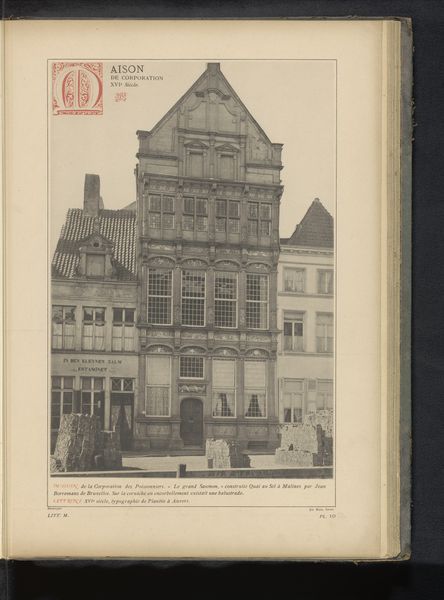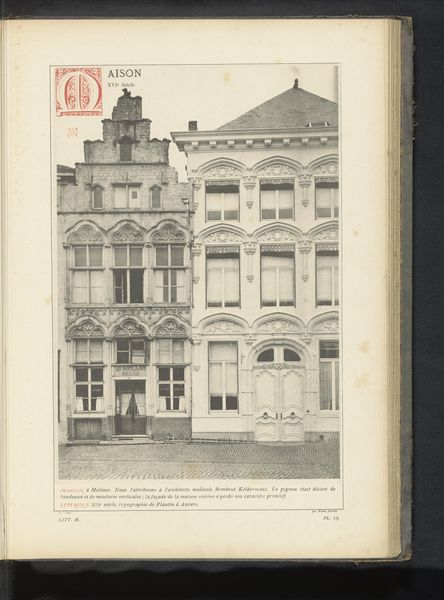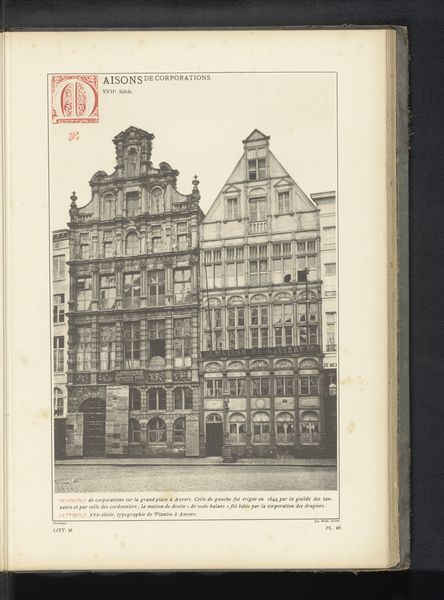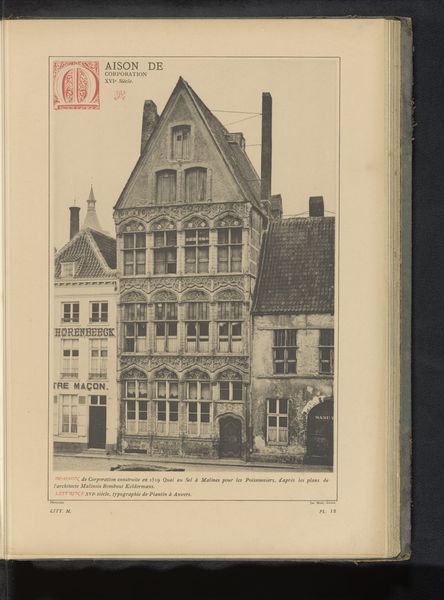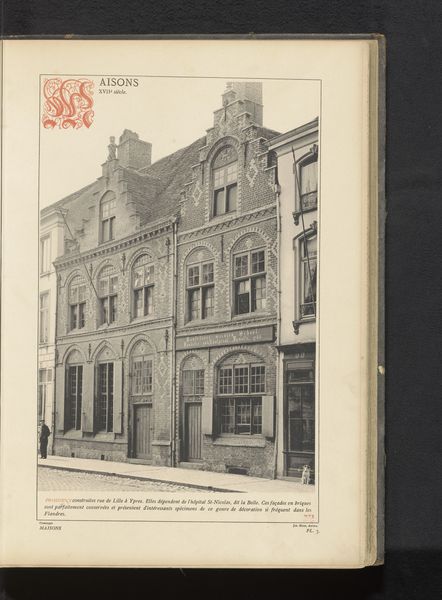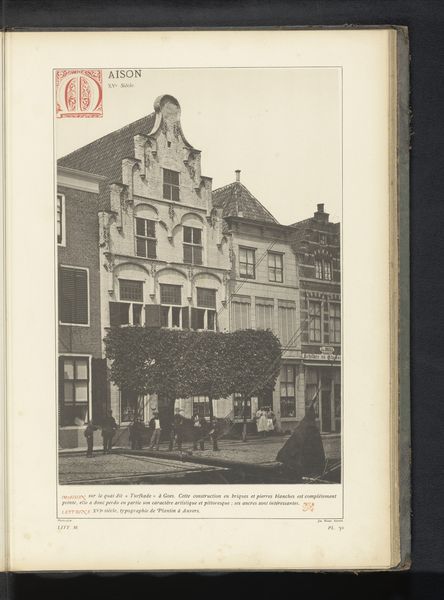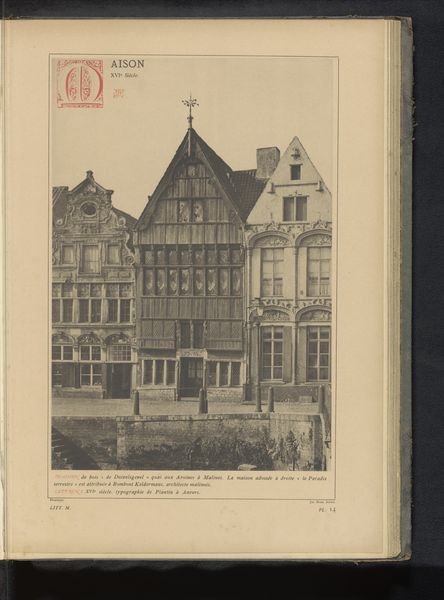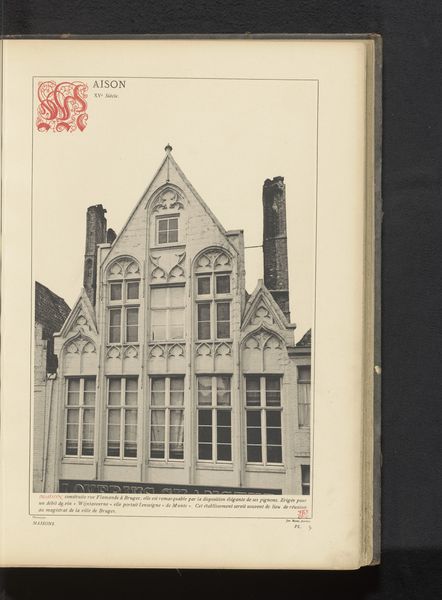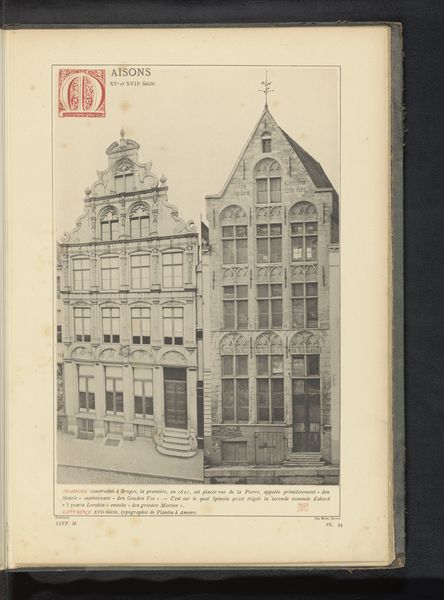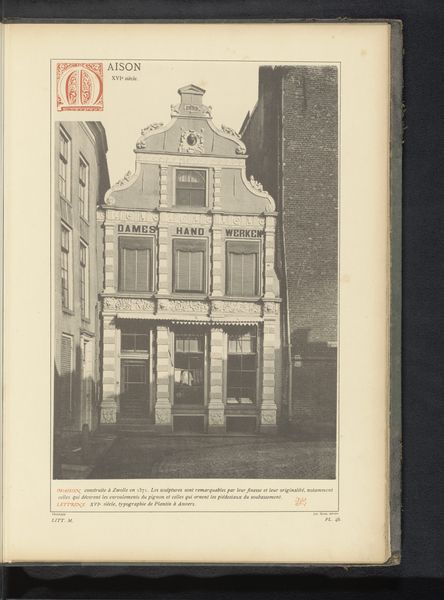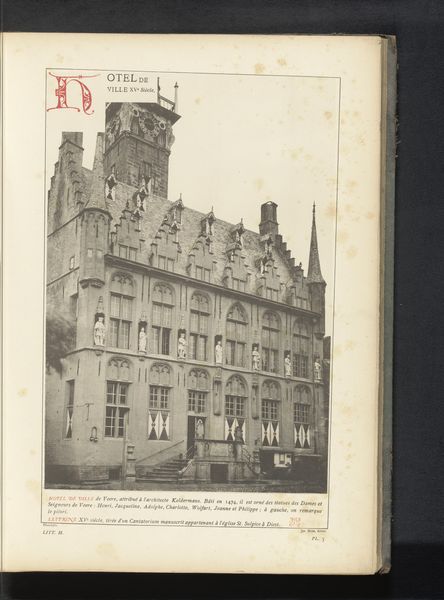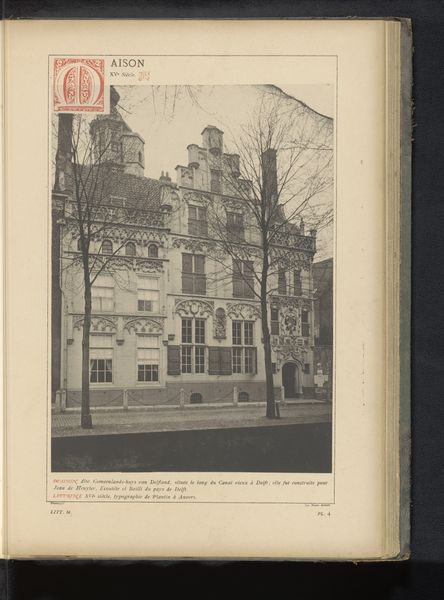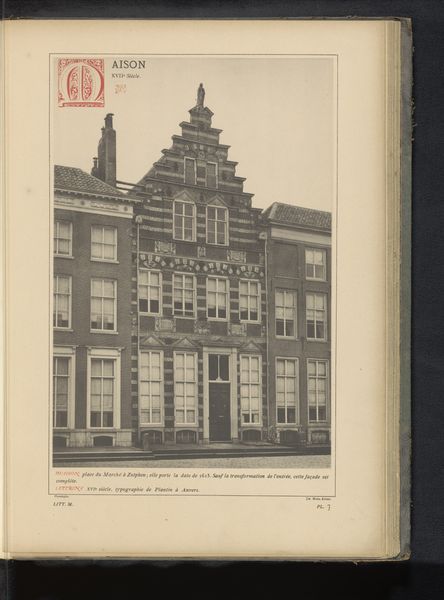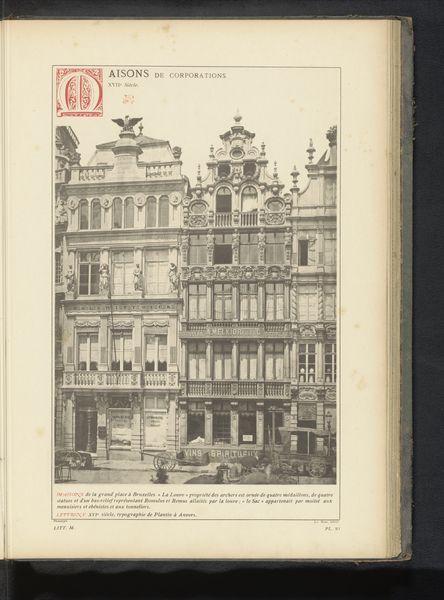
Gezicht op het huis De zeven werken van barmhartigheid aan de Kraanlei in Gent, België before 1880
0:00
0:00
print, photography, architecture
# print
#
photography
#
cityscape
#
architecture
#
realism
Dimensions: height 334 mm, width 228 mm
Copyright: Rijks Museum: Open Domain
Curator: Let’s turn our attention to this anonymous image titled “View of the House of the Seven Works of Mercy on the Kraanlei in Ghent, Belgium,” dating from before 1880. Editor: Stark, isn't it? There's a certain grimness in the realism, a palpable weight to the stone facades, the whole composition feels rather somber to me. Curator: Well, considering it captures a structure originally intended to provide charitable services – what we might understand today as a kind of early social welfare provision – the heaviness you describe might be apt. This print offers insight into the architecture and social fabric of 19th-century Ghent. The meticulous rendering draws our attention to the building's construction, labor of crafting those detailed facades and the intention that informs the build. Editor: Right, and seeing it like this, caught in a black-and-white photograph, raises interesting questions about the visibility – and the value – of social care across time. Who had access to these 'works of mercy', and what were the power dynamics at play? The photograph itself becomes an instrument of looking at the complex layers of civic identity in play at the time. The very act of depicting these charitable institutions through photography raises awareness about the urban environment. Curator: The reproduction process is noteworthy here as well, allowing for broader dissemination of the image, therefore contributing to wider understanding of civic duties as it intersects with the burgeoning interest in urban architecture. The medium also democratizes visual access beyond the upper echelons of society that might have ordinarily experienced them firsthand. Editor: Looking closer, the building's architectural details speak to different ideals – you have elaborate ornamentation alongside quite functional fenestration. I can't help but also think about those whose stories are missing. The photograph provides only a facade of the charitable operations conducted within the building itself. Curator: I think by understanding this building not merely as stone and mortar but as evidence of deliberate social infrastructure, it enriches our understanding of societal concerns related to labor, production and material investment. Editor: Exactly. It's a striking example of how photographs not only show a scene but reflect complex ideological contexts. They encourage critical assessment of what is and isn't being actively represented and how buildings became expressions of community ethos and accessibility. Curator: Thank you. It offers such depth of understanding the photograph from its materiality and social reflection. Editor: Agreed. Thinking through the intersection of process and social context offers so many perspectives.
Comments
No comments
Be the first to comment and join the conversation on the ultimate creative platform.
